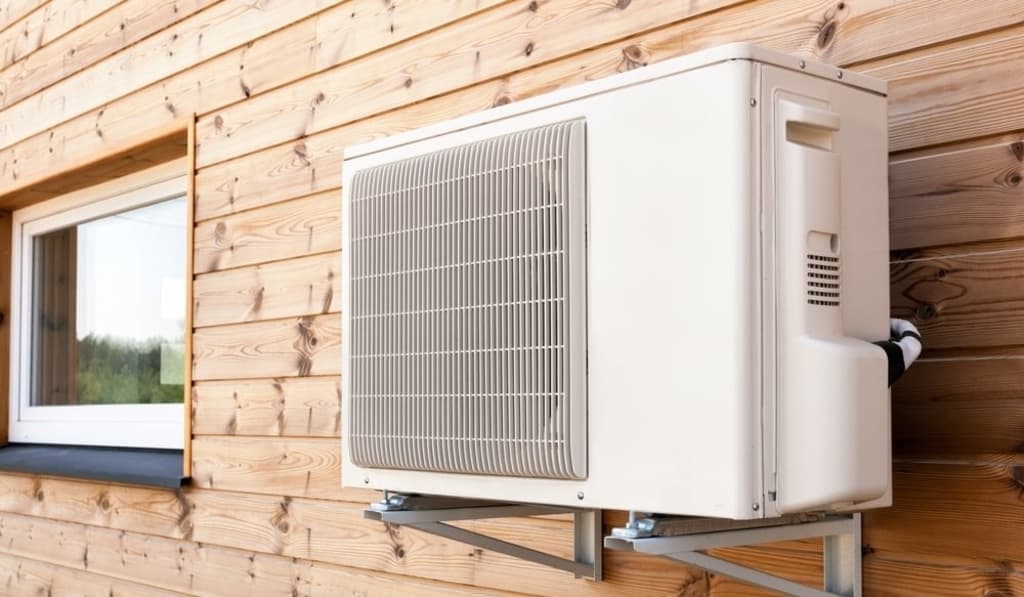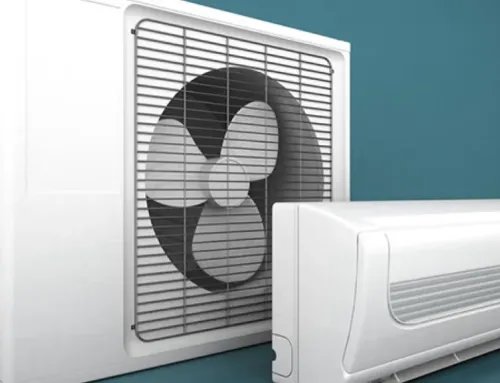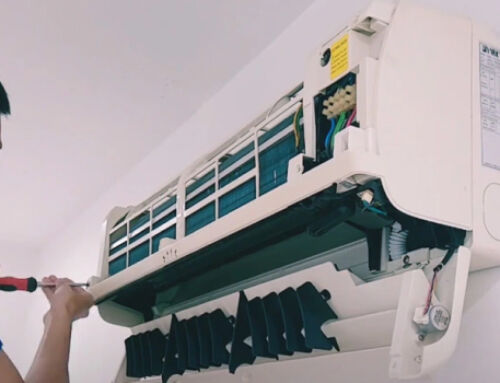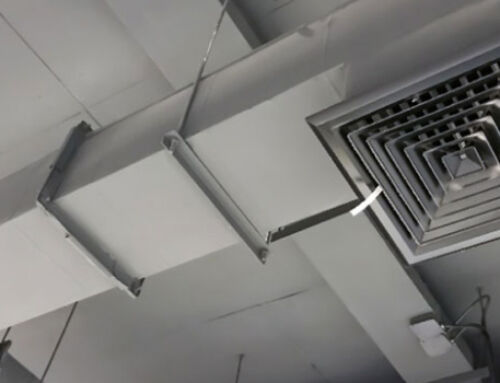Whether you’re a proud new owner or a veteran user, it’s always a good idea to get to know how does air conditioning work. It’s general knowledge that most people tend to neglect until problems arise.
Air conditioners, like most things, need regular cleaning and maintenance to make sure that they keep working efficiently.
Learning about the different components and how does air conditioning work can help you understand what needs attention and when, and will help your system to lead a long and healthy life.
If you want to learn more, check out our other resources:
1. How Much Does Air Conditioner Cost In Sydney?
2. How To Choose The Best Type Of Air Conditioner
3. Pros and Cons of Air Con You Need to Know
5. What Size Air Conditioner Do I Need?
6. How Much Power Does An Air Conditioner Use?
Standard components of most air conditioners
Here are some standard components of most air conditioner units.
Refrigerant
Refrigerant is a substance that has the unique characteristic of a very low boiling point, which helps it to change from a liquid to a vapour at relatively low temperatures.
Refrigerant is pumped through the different components of an air conditioner like blood and changes from liquid to gas as it collects and expels heat from a room.
The level of refrigerant in your system is called the charge and any leak to will lower this level, decreasing the efficiency of your AC. Depending on your refrigerant, it can be a hazardous pollutant, so it’s best to contact your HVAC professional to check your levels.
Compressor
The compressor is one of the main components of every air conditioner unit. It is responsible for pumping and pressurising refrigerant through the components so that the condenser can do its work.
Condenser
Refrigerant reaches the condenser as a pressurised, heated vapour before passing through the condenser’s coils. A condenser fan blows air over thin metal fins that lie on the coils, which conducts heat.
The refrigerant then turns back into liquid before it moves through to the expansion valve.
The compressor, condenser coil and fan are all contained in the box that sits outside called the condensing unit.
It is important to check this unit regularly for dirt and debris that may build up, especially the condenser coils, which can be cleaned with a fine brush.
Expansion Valve
The expansion is the part of the air con unit that does most of the cooling through a natural process – as gas expands, it cools. As the hot liquid passes through a small opening, it expands turning into a lower-pressure cool mist.
Evaporator Coil
This low-pressure cool liquid makes its way through to your air conditioners evaporator coil, which cools the air that blows over it, thereby cooling your home.
The refrigerant then begins to warm up and eventually boils and makes it way back to the outdoor condenser unit where the cycle repeats.
Filters
Filters are located on the inside component of your air conditioner and remove dust particles, however, they may not function to the best of their ability if they are clogged.
It’s important to maintain as well as regularly change your filters to avoid circulating dust throughout your home.
What Do Air Conditioner Symbols Mean?
So you’ve just had a brand new AC unit installed. It’s a scorching hot day, and you want to put your new system to the test… but when you pick up the remote, you can barely read it!
The controls on a new air con unit can be a little confusing at first, it might even look like another language to those who haven’t had a system before.
Different manufacturers may use slightly different symbols, however, you’ll also find a lot of commonality between different remotes. This article is here to explain some of the functions you’ll likely encounter.
If your AC remote looks like a slab of ancient hieroglyphics, we’re here to help. This article should help to demystify the functions of your air con unit.
Universal ‘On’ Button
The first one is pretty easy. It should look like a circle with a slit in it, and it’s the universal symbol for On/Off. You probably have one on your TV remote as well.
Plus and Minus Buttons
Also relatively straight forward, these buttons control ambient room temperature. As you’d expect plus is more, minus is less.
Snow Flake Symbol
Most air con remotes will have something that resembles a snowflake, which activates cold-mode. This means the air con unit will push out cold air.
Sun Symbol
The sun symbol is common on reverse cycle air con systems, and activates the heat mode, meaning the air con unit will push out hot air.
Fan Speed
The speed at which the air con unit’s fan blows is usually indicated by a row or a stack of bars, the more bars, the faster the fan speed.
Automatic Mode
Automatic mode is usually depicted as a circle of arrows, sometimes with the letter ‘A’ inside. With this function engaged the unit will maintain a temperature after it has been reached. It’s available in hot and cool modes.
Quiet Mode or Silent Mode
Quiet or silent mode is often indicated by a symbol of a figure with a finger over their mouth, or sometimes a night time scene with a moon icon. This mode makes the air con unit operate as quietly as possible, reducing fan noise to a minimum.
Vertical Air Swing
This function is often depicted as a rotating set of bars, sometimes with an indicative arrow. It can usually be set to static or rotating, which means the fans will angle down and up in a cyclical fashion.
Horizontal Air Swing
A horizontal air swing is similar to a vertical air swing, however, the function affects the horizontal axis. The symbol is usually similar to the vertical button but rotated 90 degrees.
Turbo Button
Turbo mode makes the system run at full capacity for 15 to 30 minutes, depending on the make of the unit. It is usually marked by a bicep symbol, an arrow that indicated motion, or simply by ‘turbo’.
BONUS: Air con tips that will save you money
Everyone wants to stay cool in the summer and warm in the winter, and a high-quality air con unit is the perfect way to create a comfortable climate in your home.
While the initial outlay may be costly, there are several things that you can do to save money on your air con bill all year round! Check out our tips and tricks below.
Maintain your thermostat
It is always a good idea to learn how to use your thermostat properly and in a way which saves you money. It is far more energy-efficient, and therefore, economical to set the thermostat at a comfortable, mid-range temperature rather than pumping it up high as soon as you feel hot.
Allowing the system to steadily decrease the temperature uses less energy and places less of a strain on your air conditioner system. As a result, you’ll end up with some extra dollars in your pocket.
Look after the refrigerant
The refrigerant in your air conditioner is important in allowing your AC system to run smoothly and effectively.
If the refrigerant is not properly charged, it can damage the compressor and trigger an expensive repair. This can also increase your energy use as the system is not operating at optimum efficiency.
If you notice that the vents are discharging room temperature air, even after the system has been running for at least fifteen minutes, you may need your refrigerant charging. If that doesn’t seem to be the problem with your unit, you may also need a top-up if the system has had a leak.
Clean your coils
The condenser coils on the outside units can easily become clogged up with dirt, dust and other debris which make your AC unit work harder to pump out cool air, increasing energy consumption and making your bill extra pricey.
It is well worth checking if there is any dirt or garden debris clogging up the coils to improve airflow and help the system operate more efficiently. If you find that the coils are clogged, be sure to clean them as soon as possible.
Clean and replace your filters
Similarly to the coils of an Ac unit, filters can become clogged with dirt and debris. While filtering these particles from the system is the primary function of this component, a dirty filter becomes almost useless and can force the system to work harder to maintain the temperature.
Most manufacturers recommend that filters are changed every four to eight weeks. However, you may be able to extend the lifespan of your filters by cleaning them.
Taking out the filter and removing any lint and other large debris as regularly as possible will not only increase the life of your filters but will also make your AC as energy-efficient as possible.
Next Steps After You Learn How Does Air Conditioning Work
If you follow these handy tips, you’ll be sure to save money on your electricity bills and feel comfortable in your home all year long.
Most issues with your air conditioner are best left to the professionals, so if you have any questions about the different components of your unit, or would like to know more about installation or maintenance please don’t hesitate to give us a call.
With over 9 years of experience under our belt, we pride ourselves on providing air con and electrical services of the highest quality. Get in touch with us today.






